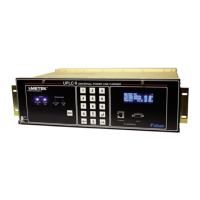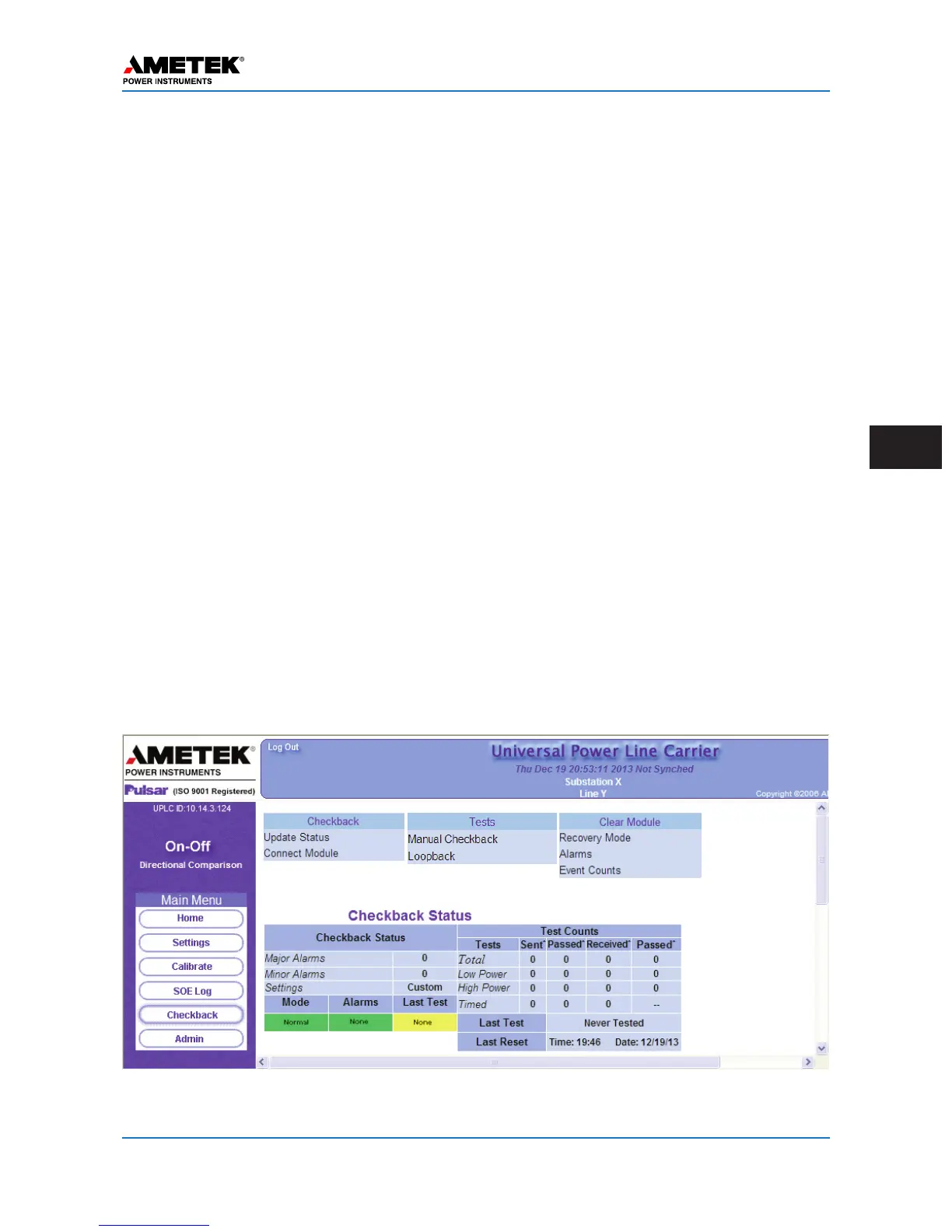January 2016 Page 6–7
Chapter 6. Testing Facilities
6
6.4 Performing Checkback
Tests/Functions
The Checkback system's primary function is to
perform checkback tests, verifying that your carri-
er communication path is operating. You can per-
form checkback tests in several ways:
• Manual request from the front panel test
menu
• Manual request from the checkback page
• Manual request from an external source via
an input set for “Checkback Initiate”
• Automatic test
• Automatic carrier recovery test
• Automatic remote-initiated tests
The Checkback system also does other secondary-
functions such as turning on remote transmitters
and getting data from distant UPLC-II™ units.
6.4.1 Manual Requests from Web
Pages
By clicking on the left-hand navigator
“Checkback” button and using the 3 pull-down
menus, you can do the following:
A. Tests
1. Run manual checkback test
2. Run loopback test to turn on remote
t
ransmitter only
B. Clear Module
1. Clear recovery mode
(also clears delayed alarm)
2. Clear alarms
3. Clear checkback events counts
C. Checkback (Communications)
1. Update status of web page
2. Connect to distant UPLC-II™ to view;
• Home page
• Settings
• Partial SOE Log
6.4.2 Loopback Test Capability (Turn
On Remote Transmitter via the
power line)
You can command a distant Automatic checkback
system to key its carrier for a specified duration
(e.g., 30 seconds), giving you time to measure
your local receiver's level. This is called loopback
tests in the UPLC-II™ and they are always per-
formed at both high and low power. If loopback
duration is set to 30 seconds, the carrier is first
keyed on high power for 30 seconds, then low
power for 30 seconds.
Figure 6–2. Example of the Checkback Page (ON/OFF Mode)

